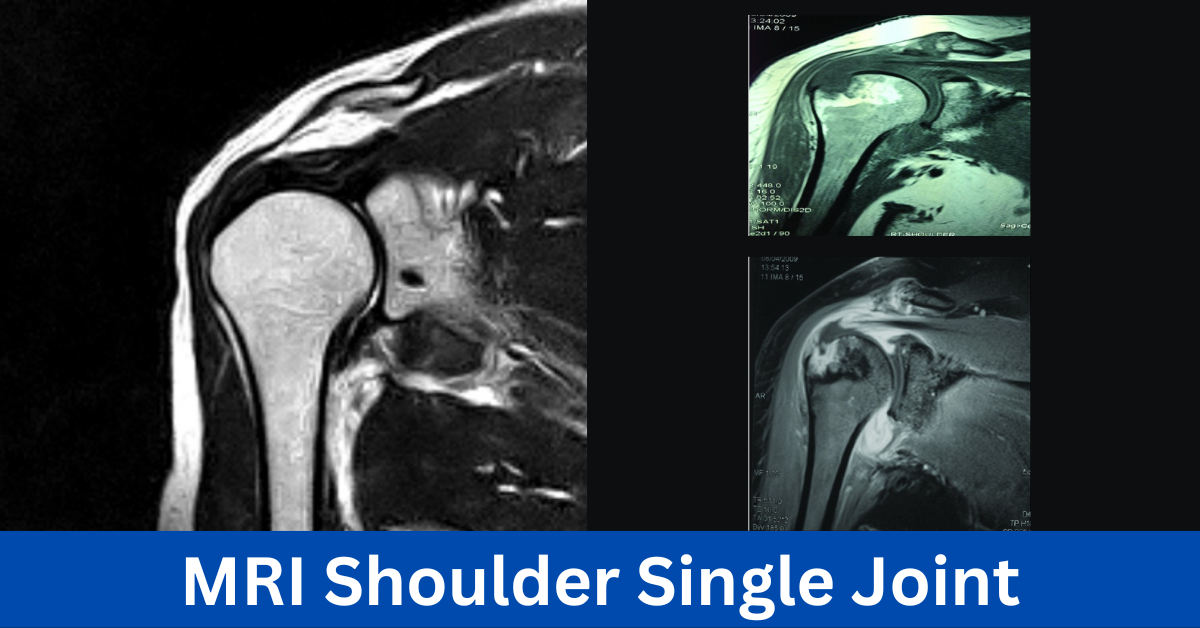Introduction
MRI, short for Magnetic Resonance Imaging, is a powerful tool in the realm of medical diagnostics. In this article, we delve into the specifics of MRI, focusing on its application in the intricate process of diagnosing shoulder joint issues. Understanding the nuances of the MRI shoulder single joint process is crucial for both medical professionals and individuals seeking accurate diagnostic insights.
Understanding MRI Shoulder Single Joint Process
MRI involves creating detailed images of the body’s internal structures using a strong magnetic field and radio waves. When it comes to the shoulder joint, a single joint MRI process allows for a more concentrated examination, offering unparalleled clarity in diagnostics. This precision is especially vital in detecting subtle abnormalities that might be overlooked in broader scans.
Preparation for MRI Shoulder Single Joint Process
Before undergoing an MRI for the shoulder joint, patients need to be aware of specific preparations. This includes understanding what to expect during the procedure and, in some cases, the use of contrast agents to enhance imaging.
The Anatomy of the Shoulder Joint
To comprehend the intricacies of MRI imaging, a basic understanding of the shoulder joint’s anatomy is essential. This section provides a detailed overview of the bones, muscles, tendons, and ligaments that constitute the shoulder, laying the foundation for accurate diagnosis.
Common Shoulder Joint Issues Diagnosed by MRI
MRI is a game-changer in identifying various shoulder joint problems. From rotator cuff injuries to labrum tears and arthritis, this section sheds light on the specific issues that MRI excels at detecting.
Advantages of MRI in Shoulder Joint Diagnosis
Why choose MRI for shoulder joint diagnosis? Here, we explore the advantages, including high-resolution imaging capabilities and the non-invasiveness that sets it apart from alternative diagnostic methods.
Challenges and Limitations of MRI Shoulder Imaging
While MRI is a powerful tool, it’s not without its challenges. This section addresses concerns such as claustrophobia and eligibility criteria for patients undergoing shoulder MRI.
Interpreting MRI Results
Interpreting MRI results is a specialized skill. Radiologists play a key role in analyzing images and communicating findings to patients, facilitating a collaborative approach to healthcare.
Case Studies: Real-life Examples of MRI Shoulder Single Joint Diagnosis
Real-life success stories highlight the impact of MRI on accurate diagnosis and subsequent treatment decisions. These case studies provide concrete examples of how MRI can be a game-changer in healthcare.
Future Trends in MRI Technology for Shoulder Diagnostics
As technology evolves, so does MRI. This section explores future trends, from advancements in imaging technology to potential improvements in diagnostic accuracy.
Integrating MRI Findings into Treatment Plans
Collaboration between radiologists and orthopedic specialists is key in integrating MRI findings into effective treatment plans. Tailoring treatments based on MRI results ensures a more personalized approach to healthcare.
Patient Experiences with MRI Shoulder Single Joint Process
Patient testimonials offer insights into the diagnostic process, helping alleviate common fears and misconceptions associated with MRI.
Insurance Coverage for MRI Shoulder Single Joint Imaging
Understanding insurance coverage for MRI is crucial. This section explores different insurance options and discusses the costs associated with the procedure.
Tips for Maximizing the Effectiveness of MRI Shoulder Single Joint Imaging
Patient cooperation and post-imaging care are essential for maximizing the effectiveness of MRI. Practical tips guide individuals through the process, ensuring optimal results.
Conclusion
In conclusion, the MRI shoulder single joint process is a pivotal aspect of modern healthcare. Its ability to provide detailed insights into shoulder joint issues empowers both medical professionals and patients to make informed decisions regarding treatment and care. Proactive healthcare, facilitated by diagnostic screenings like MRI, is key to maintaining optimal shoulder health.
FAQs (Frequently Asked Questions)
Is MRI painful?
- No, MRI is a non-invasive procedure and is generally painless. However, some patients may experience mild discomfort.
How long does an MRI for the shoulder take?
- The duration varies but typically lasts between 30 minutes to an hour.
Are there any risks associated with MRI?
- MRI is considered safe for most people. However, individuals with certain implants or medical conditions may need to consult with their healthcare provider.
Can I request an MRI, or does it require a doctor’s recommendation?
- Generally, an MRI requires a doctor’s referral based on a clinical evaluation. However, in some cases, direct requests can be made.
What should I wear for an MRI of the shoulder?
- Loose-fitting, comfortable clothing without metal is advisable. In some cases, a hospital gown may be provided.
